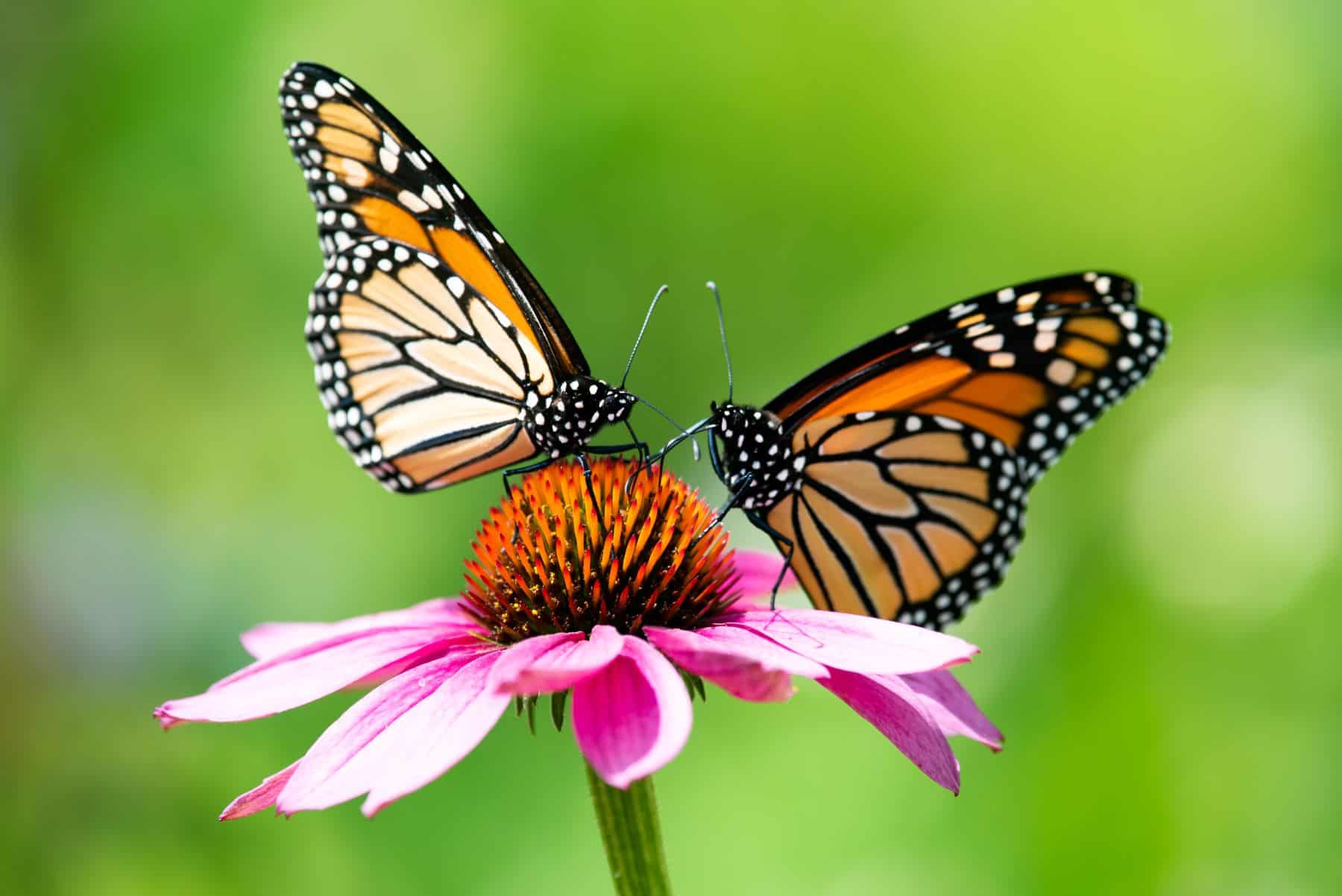
Why should you grow plants for pollinators? For starters, bees, butterflies and hummingbirds are colorful and interesting visitors to any garden. And without these pollinators and the plants that support them, there literally wouldn’t be gardens.
Unfortunately, many of these winged jewels are in trouble. The populations of many species of butterflies, hummingbirds and bees are being threatened by shrinking natural habitats that provide them food and shelter.
According to Kylee Baumle, author of The Monarch: Saving Our Most-Loved Butterfly, gardeners have a crucial role to play in pollinator health. Growing pollinator plants and creating pollinator gardens is vitally important in maintaining populations of bees, butterflies and hummingbirds.
What Does a Pollinator Garden Look Like?
At first glance, a pollinator garden might look like a typical flower garden. It’s dominated by perennial plants that flower in a rainbow of colors. But a pollinator garden contains a carefully selected variety of native and adapted flowering perennial plants that are especially attractive to pollinators.
Plants for pollinators provide a steady supply of nectar and pollen that serve as a food source. Other plants in a pollinator garden support butterflies in their larval (caterpillar) stage. Because pollinators need food throughout the warm growing season, a well-planned pollinator garden includes flowers that bloom in spring, summer and early fall. There should always be something blooming.
To turn your garden into a Garden of Eden for pollinators, add some of the native and adapted flowering perennials highlighted below. Honeybees will thank you. Butterflies will delight you with their presence. Hummingbirds will put on a colorful show as they sip on the nectar your flowering plants provide. Best of all, you will enjoy a backyard that makes the world a more beautiful and healthier place.
Plants for Pollinators #1: Butterfly Bush
There is an obvious reason why people started calling this flowering perennial shrub butterfly bush. It is an absolute butterfly magnet.
For larger spaces in the yard and garden, a butterfly bush (Buddleia davidii) is an attractive ornamental shrub that does well in USDA zones 5-9. Planting a few bushes together can create a profusion of summertime winged visitors. Butterfly bushes bloom on new growth, so they should be heavily pruned early in the growing season for the best display of flowers—and butterflies. They grow best in full sun with well-drained soil.
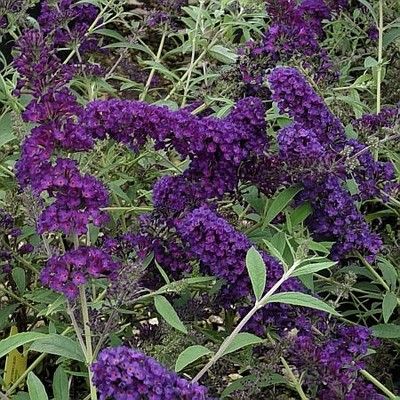
Many varieties of butterfly bush are widely available. ‘Black Knight’ has dark purple flowers. ‘Perfecta Trifecta’ has three different colors of flowers. ‘Buzz Magenta’ has (you guessed it) magenta flowers. White- and pink-flowered varieties are also available. Check out the selection at NatureHills.com.
Pollinator Plant #2: Milkweed
Native milkweed is a great perennial in a pollinator garden—and it’s must-have plant in a butterfly garden. Common Milkweed (Asclepias syriaca) is the classic host plant of the monarch butterfly, and it is an important source of food for other butterflies as well. Native milkweeds (many species of which are called “butterfly weed”) are easy to grow and come in a delightful array of colors.
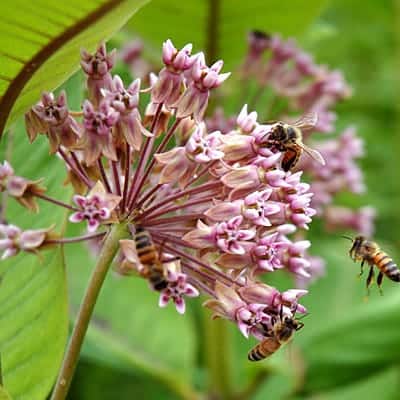
An excellent choice for Southern climates is swamp milkweed (Asclepias incarnata), a compact perennial that is tough and dependable. Its cherry-pink flowers with white centers emanate a sweet vanilla fragrance that attracts a wide variety of pollinators. Swamp milkweed fits perfectly in smaller garden spaces, and like all native milkweeds, is a vital host plant to the monarch caterpillar. It’s also a great garden choice because it is deer resistant. Seeds and plants are available from AmericanMeadows.com.
Flowering Perennial #3: Columbine
Columbine (Aquilegia x hybrida) is an early season gem that blooms in late spring or early summer. Columbine needs a fairly rich and well-drained soil, and it will grow in sun or partial shade. Most varieties grow 24 inches to 36 inches tall, and they look great in borders and perennial beds.
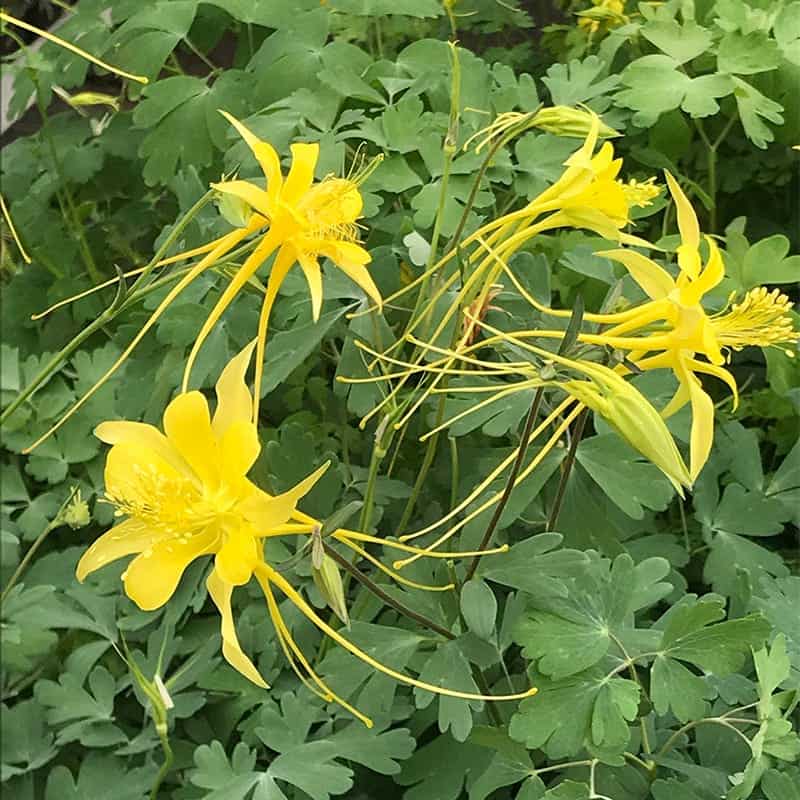
The most commonly known columbine varieties produce yellow or white flowers, but other varieties offer two-toned flowers—such as red petals and yellow centers or burgundy petals and white centers. Rocky Mountain Columbine, the state flower of Colorado, produces flowers with purple petals and white centers.
Pollinator Plant #4: Coneflowers
Coneflower varieties (Echinacea spp.) are popular choices for pollinator gardens because the flowers attract both bees and butterflies. Featuring lush green foliage and big beautiful flowers, these summer bloomers are stunning in a pollinator garden. Coneflowers are easy to grow, dependable perennials that provide an abundance of beauty without asking much in return. The classic lavender-flowered purple coneflower (Echinacea purpurea) is a garden favorite that grows 24-36 inches tall.
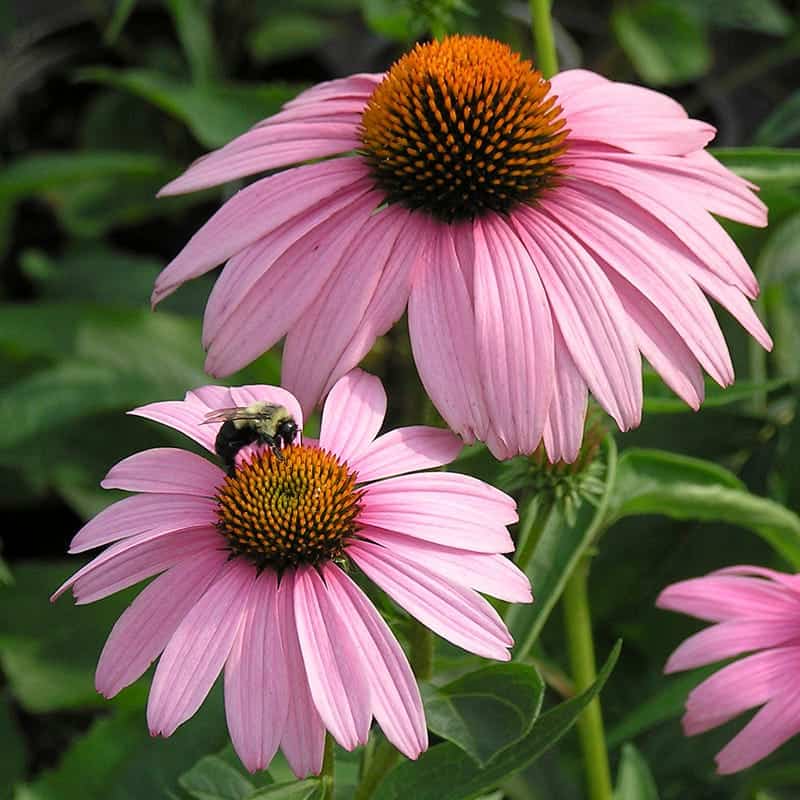
To make a bold statement, add some of the newer coneflower varieties. Echinacea ‘Sombrero Sandy Yellow’ has the familiar shape of a coneflower, except its petals are yellow. This long-blooming new variety is vigorous, and the petals hold their color even in full, bright sun. Another yellow coneflower is Echinacea paradoxa ‘Ozark Coneflower.’ Its petals are sunshine yellow with large, distinctively coneflower centers. Plant Ozark Coneflower in groups of three to dramatize their impact in the garden. Several different varieties of echinacea plants can be found at local garden centers and at HighCountryGardens.com.
Plants for Pollinators #5: Goldenrod
When choosing plants for pollinators, it’s hard to go wrong with goldenrod. Bees and butterflies can’t resist the bright yellow flowering spikes of native goldenrod (Solidago spp). Rich in nectar, this flowering perennial plant is a great choice for bee and butterfly gardens.
Goldenrod pairs beautifully with purple-flowering shrubs and perennials. Goldenrod typically has a long bloom time, from summer into fall. Many varieties of goldenrod are available, and the plants typically grow up to five feet tall. An established goldenrod plant in full bloom makes a dramatic statement in the garden.
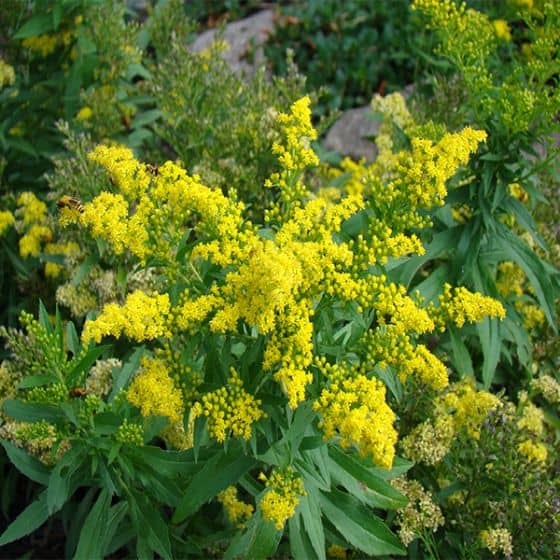
A variety called Stiff Goldenrod (Solidago rigida) grows 3-5 feet tall, and it provides critical habitat for many species of butterflies. Dwarf Little Lemon Goldenrod is a great choice for smaller spaces, since it only grows 14 inches tall with a spread of 12-18 inches. Other varieties are available at Amazon.com.
Perennial Plant #6: Blazing Star
Blazing Star (Liatris spp.) is a wildflower favorite of butterflies. The tall lavender-purple spikes of a blazing star (also known as gayfeather) in bloom are a delight in the garden, and this resilient plant is a good choice for hotter, drier areas of the garden.
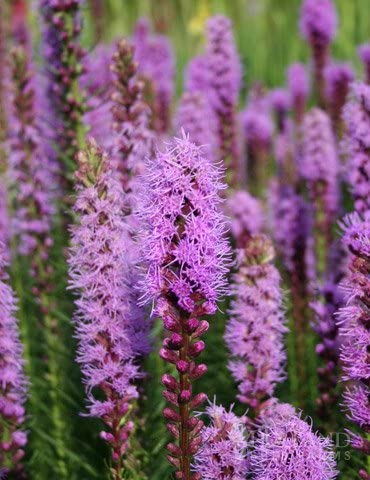
Blazing star blooms in summer to fall, just when the flowers of early bloomers are burning out from the summer heat. Liatris looks great as a perennial background, with ornamental grasses or with white blooming flowers such as tall white phlox Phlox paniculata ‘David’ or white yarrow. Blazing star seeds and plants are available from Amazon.com.
Plants for Pollinators #7: Penstemon
Penstemon, sometimes known as “beardtongue,” is a great choice for a butterfly and hummingbird garden. This tough perennial can be found blooming in pleasant shades of blue, purple, pink and red.

The bold orange flower spikes of Pineleaf Penstemon (Penstemon pinifolius) from HighCountryGardens.com are gorgeous. Its upright habit makes it perfect for viewing the hummingbirds and butterflies that are attracted to its nectar-rich flowers. For a penstemon with blue flowers, try Rocky Mountain Penstemon. The blue-purple flower spikes are formed on compact, upright foliage and act as magnets for hummingbirds and butterflies. Other penstemon varieties are available at Amazon.com.
Home Garden and Homestead is a proud member of affiliate marketing programs from NatureHills.com and Amazon.com. We receive a small commission from the links in this story.
Thank you for supporting the work of this website!
If you want more information about pollinators, read How to Attract Hummingbirds to Your Yard.


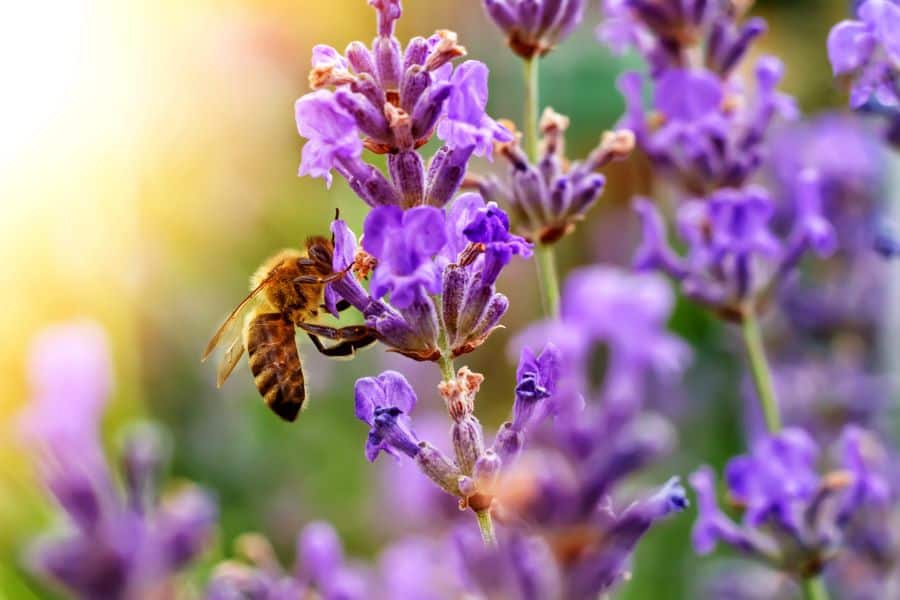


Leave a Reply